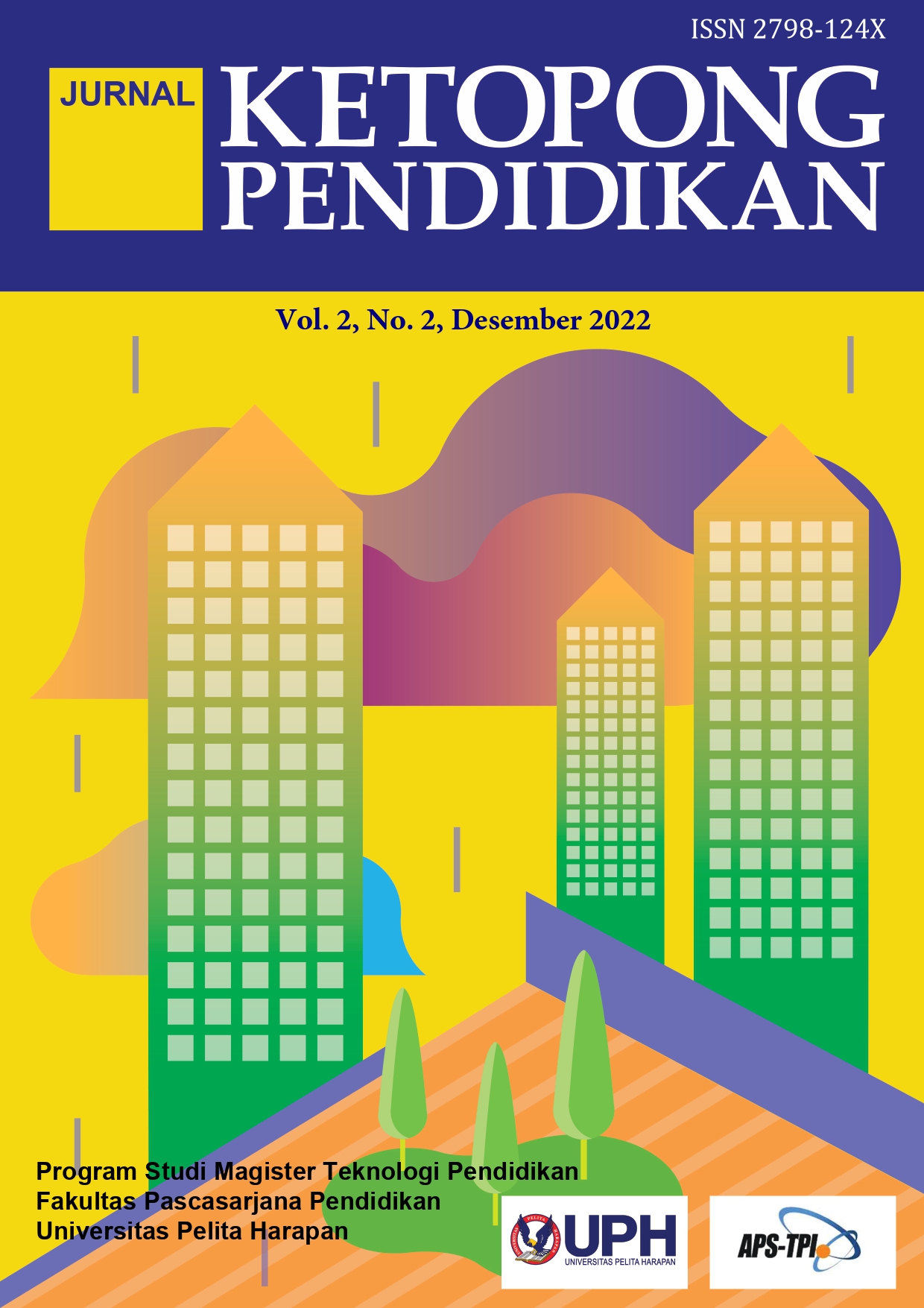Dinamika Kelekatan, Pola Asuh, Konsep Diri dan Teman Sebaya Terhadap Perilaku Agresif (Studi Kasus Perilaku Seorang Anak Agresif Pemarah Usia 10 Tahun di Sekolah XYZ)
DOI:
https://doi.org/10.19166/jkp.v2i2.10307Kata Kunci:
Interpersonal Relationships, Emotional Development, Self-Regulation, Social Interaction, Child Case StudyAbstrak
Aggressive behavior in children is characterized by deliberate actions intended to harm others physically or psychologically. Understanding the development of such behavior is crucial in the school environment, as it affects children’s learning and social interactions. This study aims to examine the case of a child who exhibited aggressive behavior by exploring family factors, parenting style, self-concept, and peer influence. This qualitative research employed a case study approach and was conducted at an elementary school in West Jakarta from April to October 2013. The subject was a 10-year-old boy in the fourth grade, the eldest of two siblings of Chinese-Indonesian descent. Data were collected through interviews, observations, and document analysis, and validated using triangulation. The findings revealed that the child’s secure attachment changed due to negative family conditions, particularly harsh discipline and reduced maternal attention after the birth of a younger sibling. The authoritarian parenting style, which emphasizes high standards and strict discipline, triggered aggressive behavior. A lack of positive reinforcement and constant comparisons with others fostered a negative self-concept. In addition, peer influence—especially exposure to verbal aggression—intensified the child’s emotional outbursts, particularly during group activities such as sports. In conclusion, children’s aggressive behavior is influenced by interrelated factors, namely insecure attachment, authoritarian parenting, a weak self-concept, and peer influence. Addressing these issues requires consistent parental support, positive reinforcement, and the role of educators in helping children regulate emotions and build healthy social interactions.
Referensi
Bandura, A. (1986). Social foundations of thought and action: a social cognitive theory. Englewood Cliffs: Prentice Hall.
Berk, L. E. (2003). Infants, child development. United States of America: Pearson.
Berk, L. E. (2005). Infants, children and adolescents. United States of America: Pearson.
Berns, R. M. (2007). Child, family, school community socialization and support. Canada: Thomson Wadsworth.
Boyd D. R., & Bee, H. L. (2006). Lifespan development. United States of America: Pearson.
Breakwell, G. M. (1997). Coping with aggressive behaviour. Leicester: The British Pschological Society.
Buss, A. H., & Perry, M. (1992). The aggression questionnaire. Journal of personality and social psychology, 63(3), 452-459. https://doi.org/10.1037/0022-3514.63.3.452
Desmita. (2006). Psikologi perkembangan.Bandung: Remaja Rosdakarya.
Ellis, O. J. (2008). Psikologi pendidikan membantu siswa tumbuh dan berkembang. Jakarta: Erlangga.
Fraenkel, J. R., & Wallen, N. E. (2008). How to design and evaluate research in education. New York: McGraw Hill.
Hoffman, L. W., Paris, S. G., & Hall, E. (1994). Developmental psychology today. New York: McGraw Hill.
Hurlock, E. B. (1978). Perkembangan anak. Jakarta: Erlangga.
Hurlock, E. B. (2000). Perkembangan anak. Jakarta: Erlangga.
Kempes, M., Matthys, W., Maassen, G., Van Goozen, S., & Van Engeland, H. (2006). A parent questionnaire for distinguishing between reactive and proactive aggression in children. European child & adolescent psychiatry, 15(1), 38-45. https://doi.org/10.1007/s00787-006-0502-2
Kuppens, S., Grietens, H., Onghena, P., & Michiels, D. (2009). Relations between parental psychological control and childhood relational aggression: Reciprocal in nature? Journal of Clinical Child & Adolescent Psychology, 38(1), 117–131. https://doi.org/10.1080/15374410802575354
LaFreniere, P. J. (2000). Emotional development: A biosocial perspective. Canada: Thomson Wadsworth.
Monks, F. J. (1991). Psikologi perkembangan : Pengantar dalam berbagai bagiannya. Yogyakarta: Gajah Mada University Pers.
Parke, R. D., & Clarke-Steward, A. (2011). Social development. United States of America: John Wiley & Sons.
Parke, R. D., & Gauvain M. (2009). Child psychology: A contemporary viewpoint. New York: McGraw Hill.
Priatna, C., & Yulia, A. (2006). Mengatasi persaingan saudara kandung pada anak-anak. Jakarta: PT. Elex Media Komputindo.
Purwanto, M. N. (1995). Ilmu pendidikan teoritis dan praktis. Bandung: Remaja Rosdakarya.
Santrock, J. W. (2008). Life-span development . New York: McGraw Hill.
Santrock, J. W. (2011). Life-span development. New York: McGraw Hill.
Santrock, J. W. (2002). Life-span development: Perkembangan masa hidup. Jakarta: Erlangga.
Schultz, D. (1991). Psikologi pertumbungan model-model kepribadian sehat. Jakarta: Kanisius.
Yin, R. K. (2006). Studi kasus desain dan metode. Jakarta: Raja Grafindo Persada.
Unduhan
Diterbitkan
Terbitan
Bagian
Lisensi
Hak Cipta (c) 2022 Moyana Modesta Sebayang

Artikel ini berlisensiCreative Commons Attribution-ShareAlike 4.0 International License.
Authors who publish with this journal agree to the following terms:
1) Authors retain copyright and grant the journal right of first publication with the work simultaneously licensed under a Creative Commons Attribution License (CC-BY-SA 4.0) that allows others to share the work with an acknowledgement of the work's authorship and initial publication in this journal.
2) Authors are able to enter into separate, additional contractual arrangements for the non-exclusive distribution of the journal's published version of the work (e.g., post it to an institutional repository or publish it in a book), with an acknowledgement of its initial publication in this journal.
3) Authors are permitted and encouraged to post their work online (e.g., in institutional repositories or on their website). The final published PDF should be used and bibliographic details that credit the publication in this journal should be included.


